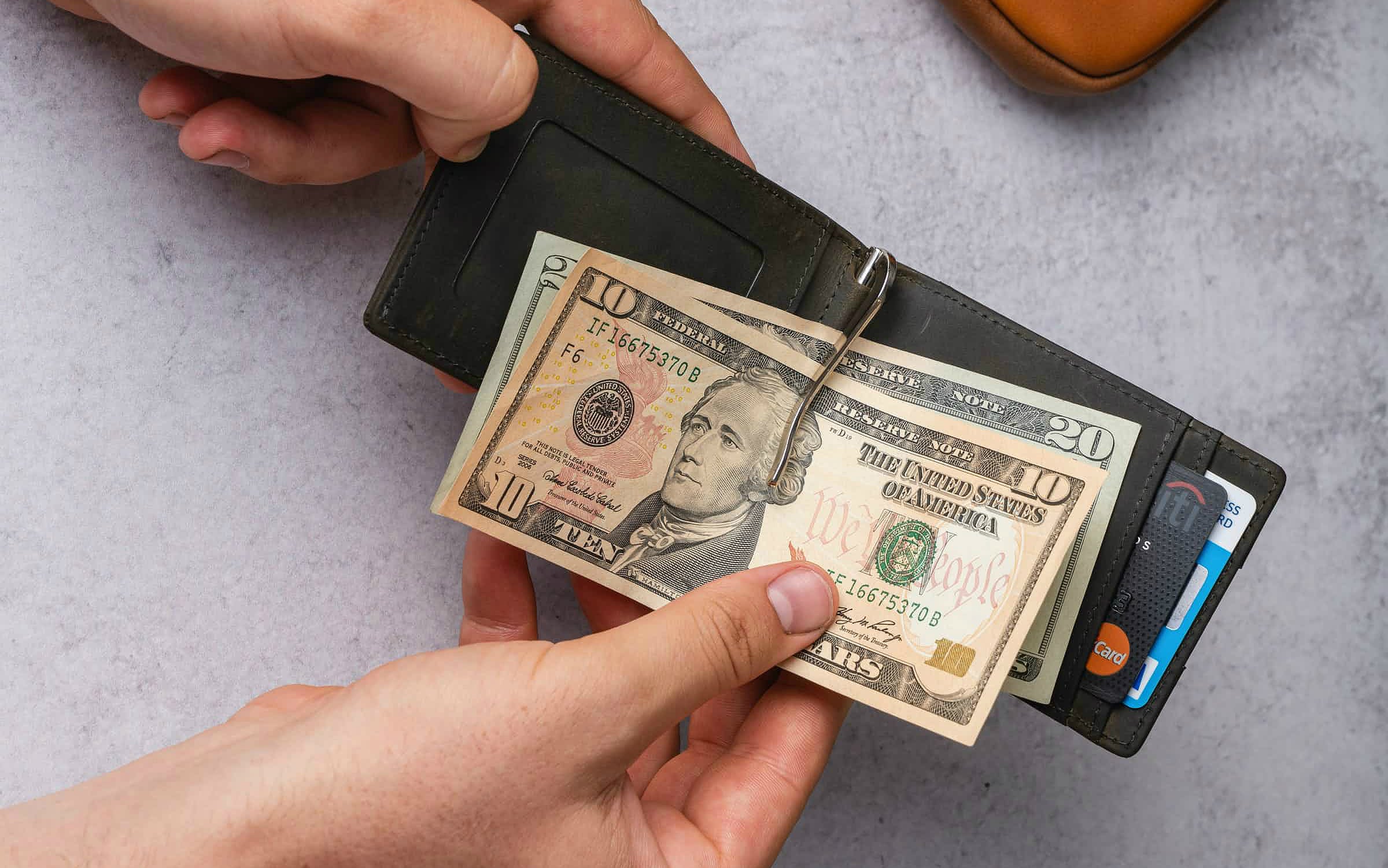With an exploded oxygen tank and powered-down devices, Apollo 13’s astronauts had 14 seconds of power to slam back into earth. Not 13 seconds. Not 14.5. Either would rebound the ship right off of the atmosphere into literal doom. Thankfully, Captain Swigert knew how to use a chronograph watch.
A wristwatch combined with a stopwatch, chronographs today are recognizable because of their three subdials and pushers. The simplest versions have just a second sweep hand and one subdial. As long as it can measure elapsed time, it’s a chronograph.
You won’t likely face an intergalactic life-or-death situation, but it’s definitely beneficial to know how to use your chronograph watch. First, as the Apollo 13 crew found out, digital devices can fail. Second, it’s a neat party trick. Besides, there’s something cool about knowing how to operate a historical complication that’s been a part of space missions, the Olympics, and important car races.

A Chronographs’s hands and subdials
Typically, a chronograph is equipped with three subdials. When you activate the stopwatch, one subdial tracks elapsed hours and another tracks elapsed minutes. Where they’re located on the dial varies to an extent, especially depending on the number of subdials the watch has.
Looking at the classic Speedmaster Moonwatch, the hour-tracker is at 6 o’clock, which you can distinguish because the subdial numbers go up to 12. The minute subdial is at 3 o’clock, which goes up to 30.
The last subdial of a chronograph, is a small seconds feature, which is located at 9 o’clock on a Speedy. This running seconds indicator tracks seconds for the time-telling part of the watch, not the stopwatch part, like the other subdials do. So, the longest hand from the center isn’t the time-telling second hand, as it would be on most other watches. This is why it doesn’t move unless you activate it.
That hand is actually the independent second sweep hand, which tracks elapsed seconds for the stopwatch function. All of the other hands are the standard time-telling indicators. The hour hand is the shorter, stouter one, while the minute hand is the longer, thinner one.
Using the pushers, the second sweep hand can be activated, stopped, and returned to zero.

The pushers: Your tools
Speaking of the pushers, they’re what you can consider your central control unit. On the side of the watch case, you’ll notice a top pusher, the watch’s crown, and a bottom pusher. Again, some chronographs can be simpler, but mastering the three-subdial version makes using anything else a piece of cake.
To get the stopwatch going, all you need to do is press the top pusher firmly until you hear or feel a click. The second sweep hand will start moving. As it completes one revolution, aka 60 seconds, the hand on the minute subdial will move, signifying the elapsed minute.
When the second sweep hand goes around 30 times, the minute subdial hand will have completed a revolution, indicating the elapsed half an hour. Also, the hour subdial hand will move into the space between the first and second position, otherwise known as the space between zero hours and one hour.
After the second 30 minutes elapses, the hour subdial hand will move into the first hour spot—so on and so forth.
To stop this madness, either press the top pusher again, so all of the subdial hands cease in place. Or, use the reset pusher at the bottom and watch the second sweep hand pop right back into the zero position.

The crown
As with any watch, the crown is used for winding your mechanical or setting your time.
You can wind your mechanical watch by moving the crown clockwise. Stop once you feel tension. On most timepieces, you can pull the crown out as far as it’ll go, and from there you can set the time and date if it has one.
In a quartz, pulling the crown stops the hands but doesn’t deactivate the crystal’s vibrations. If you want to turn off a quartz watch, just take the batteries out.

Bonus: The tachymeter scale
Not all chronographs come with a tachymeter scale, nor does a wristwatch need one for it to be considered a chrono. Tachymeters do, however, make chronographs a lot more fun. Also, since chronos were heavily used for car racing, many of them do indeed come with one. This is because tachymeter scales are used to measure speed or distance. They’re usually located on the outer dial or on the bezel, and they usually start at 500 and go down to 60.
Let’s say you want to see how fast a Chevrolet Corvette C5-R is going around a one-mile racetrack. As soon as the C5-R gets past the starting point at a constant speed, press the top chronograph pusher to activate your timepiece’s stopwatch. Once the car passes the finish line, press the pusher again to stop operation. Where on the tachymeter scale is the second hand pointing? That’s how many miles an hour it was going. With a C5-R, it’s likely pointing at 170 miles per hour, and at 21 seconds to finish.
Now let’s measure distance. You’re on a rescue mission to save a crew from their sinking submarine. You know that they’re exactly one kilometer from your location. You also know that your Barracuda XSV-17 speed boat is moving at a consistent 100 kilometers an hour. Start your chronograph. Once the second hand is pointing at 100 on the tachymeter, you’ve sailed exactly one kilometer.
You can use a chronograph tachymeter to measure any unit of measure, from kilometers to nautical miles, as long as what you’re measuring remains at a constant rate.
3 Chronographs at different price points

Bulova Lunar Pilot Chronograph
Not only does Bulova offer as historical of a moon watch as Omega does, but its Lunar Pilot is literally the Speedy’s pinch hitter. On Apollo 15, when Commander Scott’s Speedmaster broke, he used his Bulova instead. On top of its lore and legend, the Lunar Pilot runs on a three-pronged quartz movement that boasts eight times more frequency than the average quartz, resulting in an accuracy of +/-5 seconds a year.
- Price: $556+
- Case Diameter: 45mm
- Movement: Bulova/Citizen NP20 high-frequency quartz
- Crystal: Sapphire
- Water Resistance: 50 Meters

Christopher Ward C60 Chronograph
Christopher Ward’s C60 Chronograph is as much of a racer watch as it is a dive watch. This Swiss-made, Swiss movement-equipped timepiece is uncompromisingly sporty-looking, with its race-track textured subdials and yellow accents. Meanwhile, its ceramic dive bezel and 600 meters of water resistance ensure a fully amphibious tool watch.
- Price: $1,740
- Case Diameter: 42mm
- Movement: Sellita SW510
- Crystal: Sapphire
- Water Resistance: 600 Meters

Omega Speedmaster Chronometer Moonphase
Omega takes the Speedmaster’s moon-fairing heritage and brings it to fantastical places with this Moonphase Master Chronometer. Between its blue ceramic case and moonphase indicator made with corrosion-resistant LiquidMetal, this watch is sporty with a subtle touch of romance–the hands and indices are also 18k gold. It runs on a Co-Axial Chronometer, unparalleled in strength and precision.
- Price: $13,100
- Case Diameter: 44.25mm
- Movement: Omega Co-Axial Master Chronometer 9904
- Crystal: Sapphire
- Water Resistance: 50 Meters
Read Also: Rolex Daytona Alternatives For Every Budget
Disclosure: Clicking on these links and making a purchase may earn us a small referral fee, at no extra cost to you. Learn more here.


